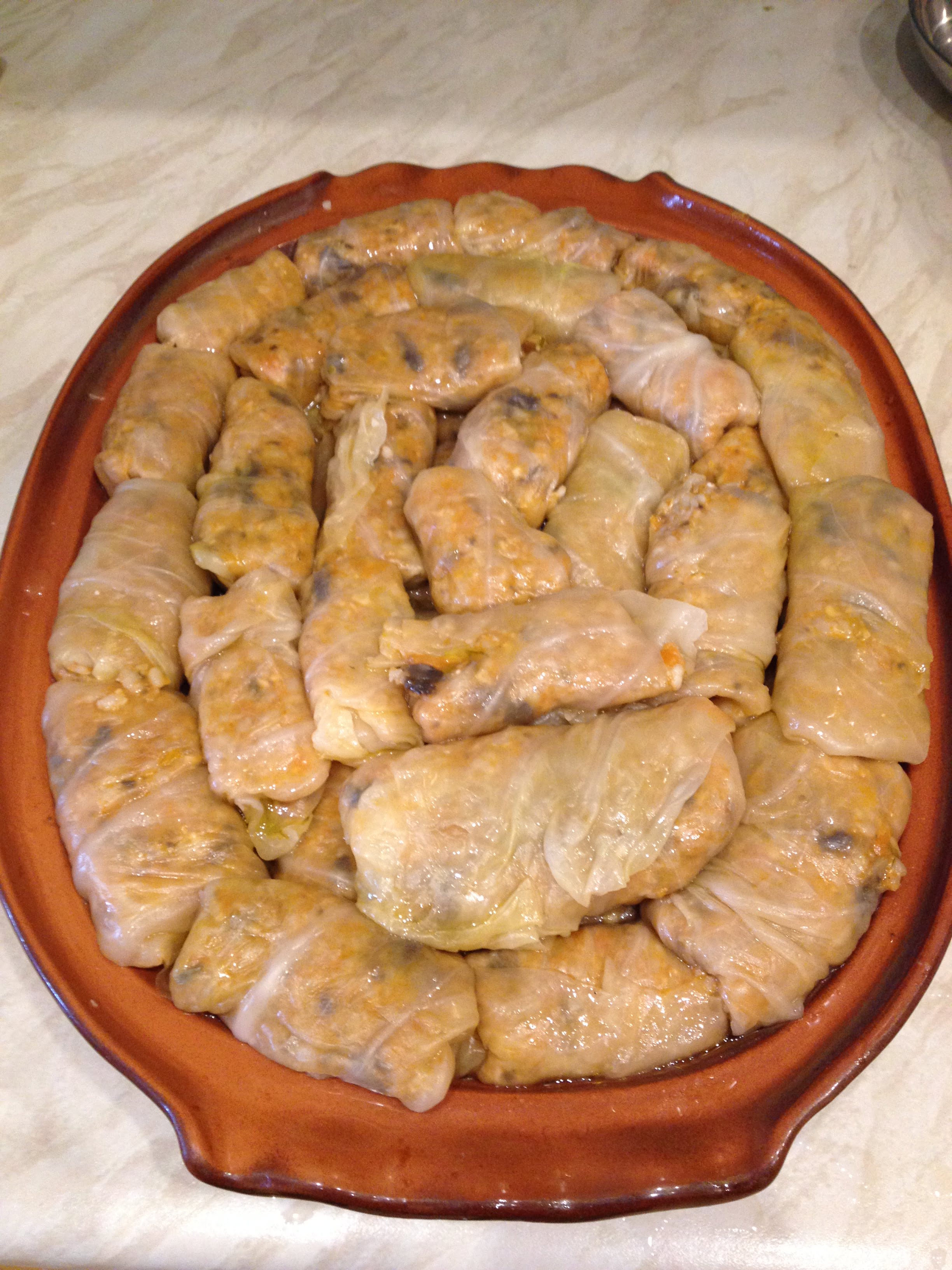
Sarmale 
Sarmale is the Romanian name for stuffed cabbage rolls; similar recipes are popular party food throughout the Balkans and former Ottoman Empire. They are similar to Greek dolmades.
I was taught how to make a vegan version of this delicious recipe by a Romanian close friend. The traditional version is stuffed with spiced meat and rice, and is best served on special occasions, as it takes ages to make. Despite that, it disappears quickly as it is delicious! My notes say “Make lots, for special occasions as it takes ages”, so amounts of ingredients will be vague.
What you need
Equipment
- a lidded oven-proof heavy ceramic/glass dish (I believe it’s called a Dutch oven); I was gifted a special dish expressly for this purpose (see picture). As a last resort, you can also use a large glass dish with aluminium foil on top
- oven
- stove, with a very large pan
- colander for draining
- chopping board, knives, standard kitchen utensils, etc.
- probably a local ethnic shop, e.g. Romanian, Turkish, Polish…
Preparation time
A long time, and multiple people. It’s a lot of work. Allow upwards of 3 hours.
Ingredients
Makes lots. Approximately 1x Dutch oven full, around 30x rolls, or enough to feed 5ish people as a side dish for a couple meals.
For the wrapping:
- 1x large loose leaf whole-head sauerkraut cabbage “varzǎ murată” (available from aforementioned ethnic shops), or:
- grape vine leaves, salted and preserved “frunză de viță de vie murată” (similarly sourced, typically sold in 500ml jars, of which you should buy 2-3 jars). If you live in a warm climate, you could also pick young grape vine leaves and preserve them rolled into cigars with salt for later use. Alternatively:
- 1x large head of iceberg cabbage (?) I’m not sure what species it is, but it’s not regular cabbage - it’s a special type, the size of a basketball with smooth, thin leaves. Ask in a Balkan shop for “varzǎ” and you’ll get what you need.
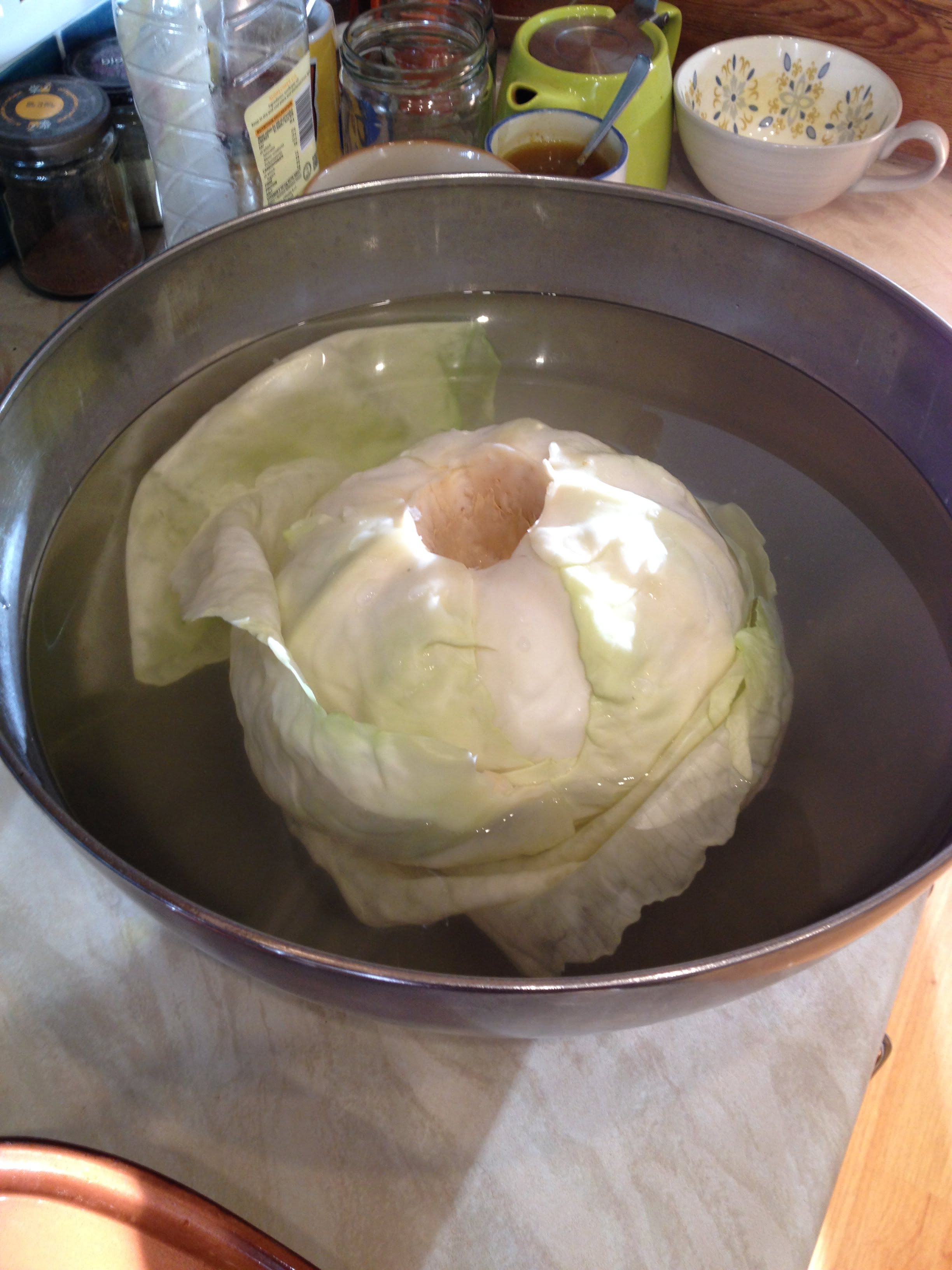
Boiling varza cabbage for sarmale
For the stuffing:
- 500ml sunflower oil (yes, it’s a lot. Feel free to use less)
- lots of shallots/onion/green onion, notes: “6cm deep in a large pan”, estimated around 3 cups
- ~3 cups of finely-chopped mushrooms
- (optional) replace 1 cup of mushrooms with 1 cup of vege-meat (TVP “Textured Vegetable (soya) Protein”, prepared gluten/seitan or brandnames like Quorn)
- ~3 cups washed rice (round-grain glutinous rice preferred, to help mixture stick)
- 1 litre bottle tomato sauce (plain passata)
- ~1 cup powdered almonds
- ½ cup fresh dill (or more - you must be able to smell the dill)
- bay leaves
- salt, black pepper
- (optional) wine
Preparation method
Prepare the filling:
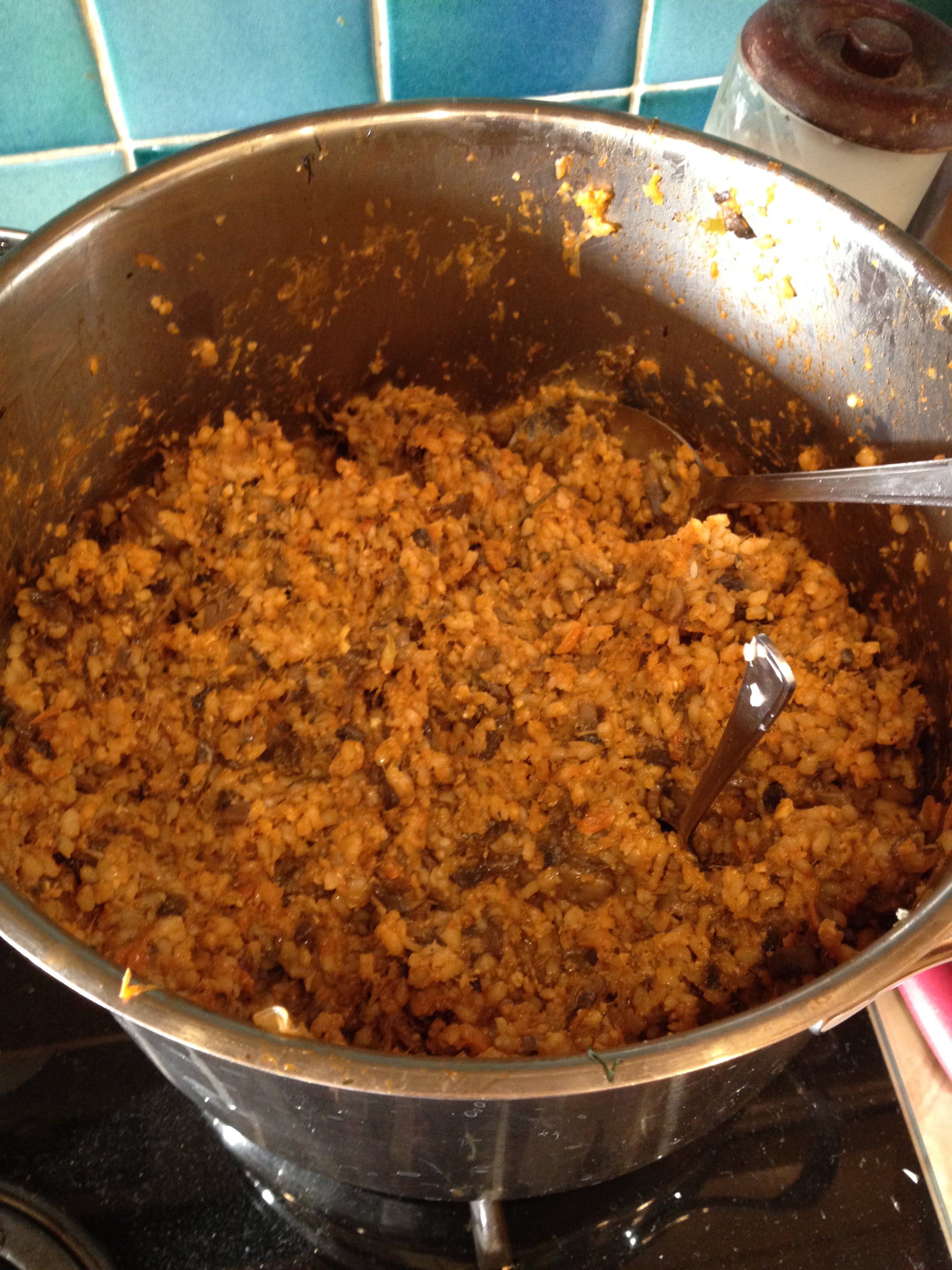
- Cook onions in large pan with some oil until soft, not browned
- Chop mushrooms (and optionally vege-meat). Add to the onions, with salt and more oil as needed, cooking until brown and water forms from the ‘shrooms
- Add most of the tomato sauce, shortly followed by:
- Add 50% again (bulk) washed rice, which should be around 3 cups, and cook a little (grains will be hard still)
- While cooking, add the dill, any wine, oil or extra herbs you want to add, salt and pepper to taste. Texture should thicken somewhat, with all the rice starch, vegetables and oil.
- Now leave the mixture to cool to touch. Once cooled, add the almond powder to further thicken and enrich the filling.
While the mixture is cooling, prepare the wrapping:
- Wash and separate the leaves. Especially if using sauerkraut or salted vine leaves, they must be washed and drained of excess salt.
- If using grape vine leaves, also trim and remove the stalks.
- If using fresh cabbage, cut out the core and cover with boiling water or boil to soften and separate the leaves which must not break
- Cut separated cabbage leaves into triangle-ish segments, avoiding tough chewy bits (remove these and set aside for later) and prioritising the thin, papery bits with which you’ll shortly be doing origami. Refer to diagram below.
- Can’t manage to roll the leaves up? Cheat by making a sort of layered lasagne out of cabbage leaves and filling, instead of small rolls.
- Assuming the filling mixture is cool enough to work with, get your assistants and fill the leaves with 1 spoonful of filling per leaf on your hand, roll it up into a short cigar, and tuck the ends in tightly. Again, please refer to diagram below. Ideal size is small, about a palm’s breadth, and they must be very tightly rolled so as not to come apart during cooking. I was an idiot when first cooking these and wanted to use string, but that idea was quickly slapped away. Pile them on a plate for now.
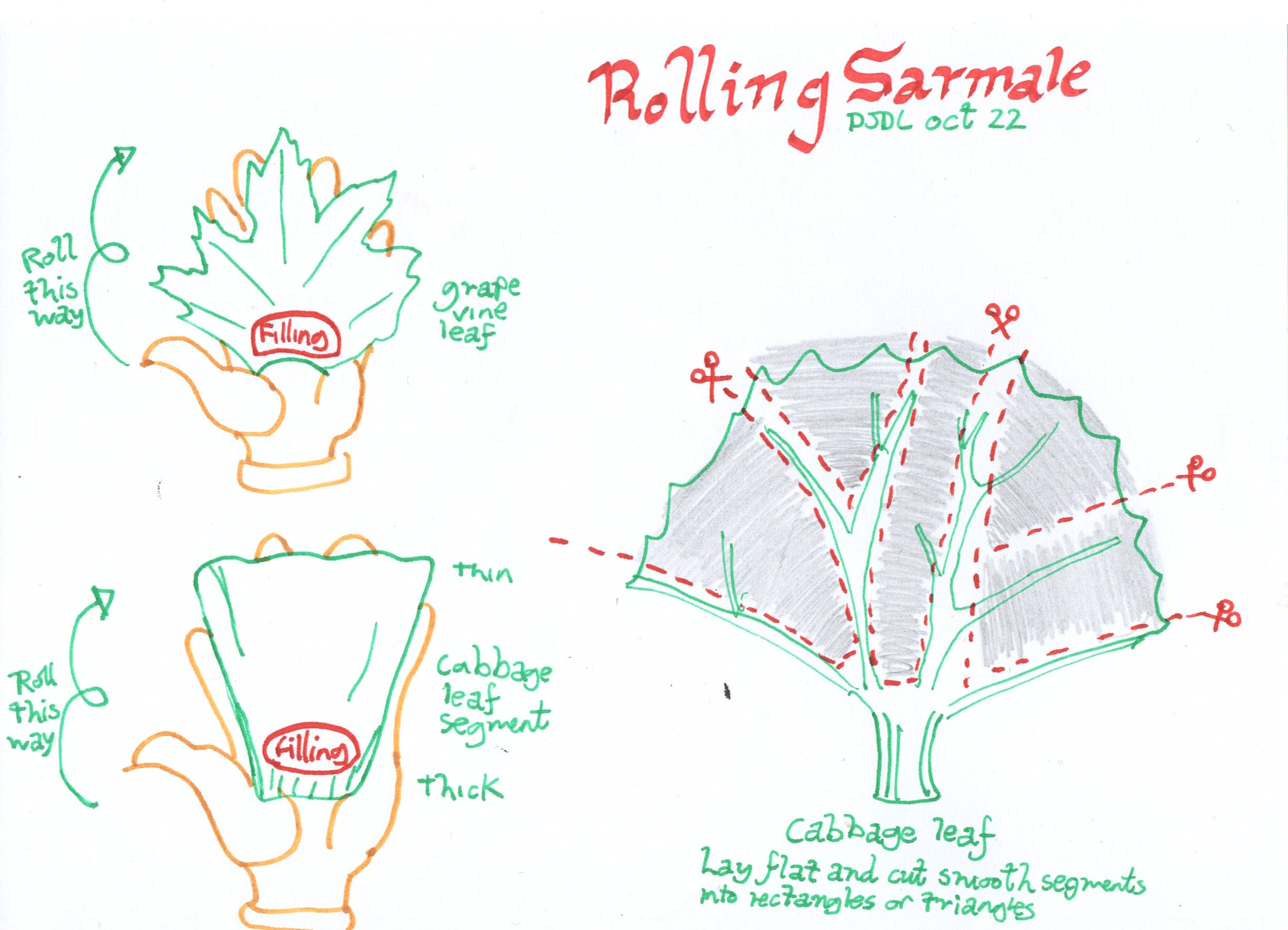
How to roll sarmale and cut the leaves
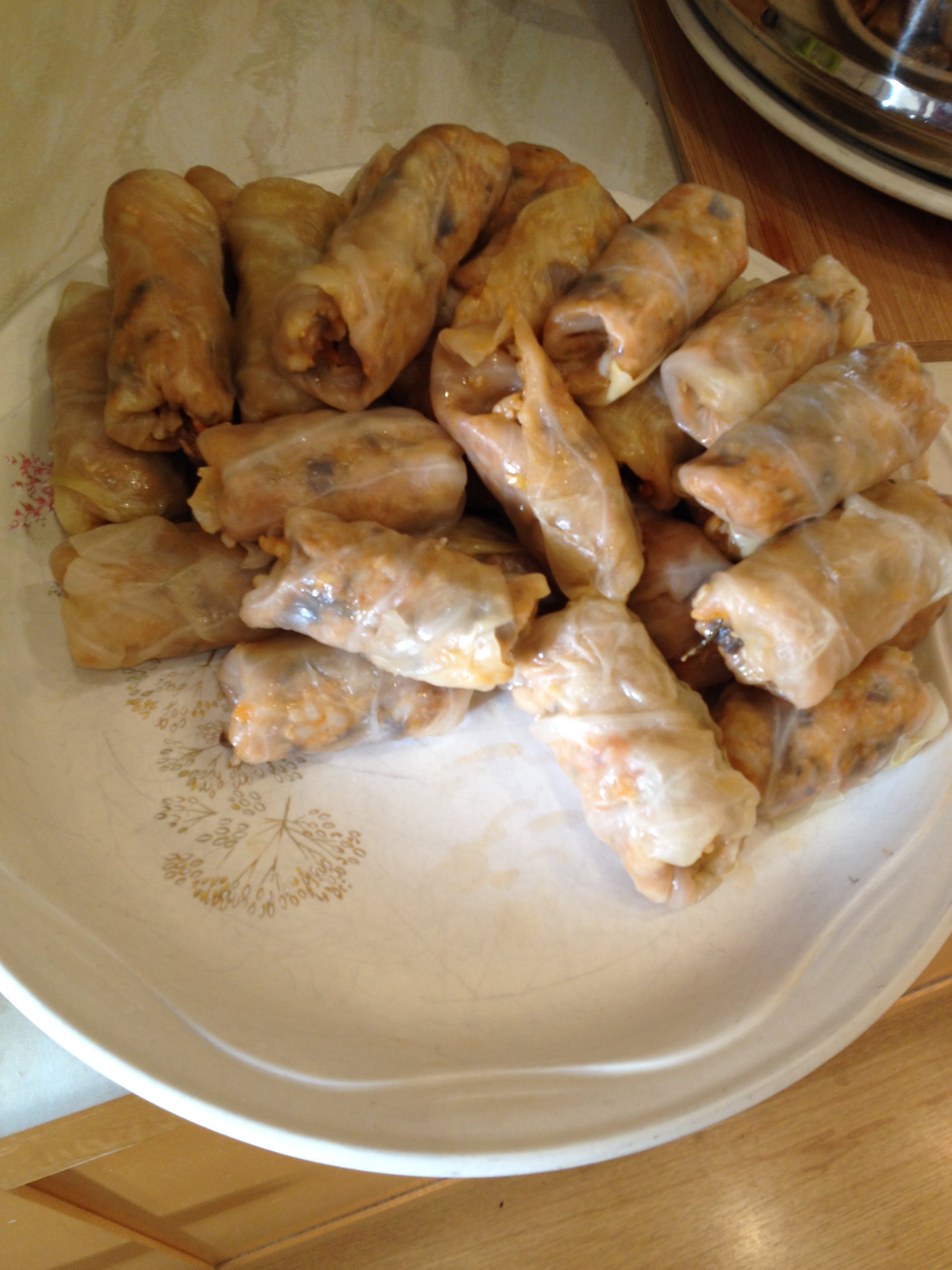
- Any big chunky bits of cabbage that cannot be used should be placed in the bottom of the Dutch oven with chopped extra leaves, to prevent the sarmales from burning. Stack them in tightly and place torn and extra leaves on top. Tuck bay leaves in, and then flood the dish with water. Or if you’re feeling fancy, a mixture of water, pepper, wine, a bit of leftover tomato sauce.
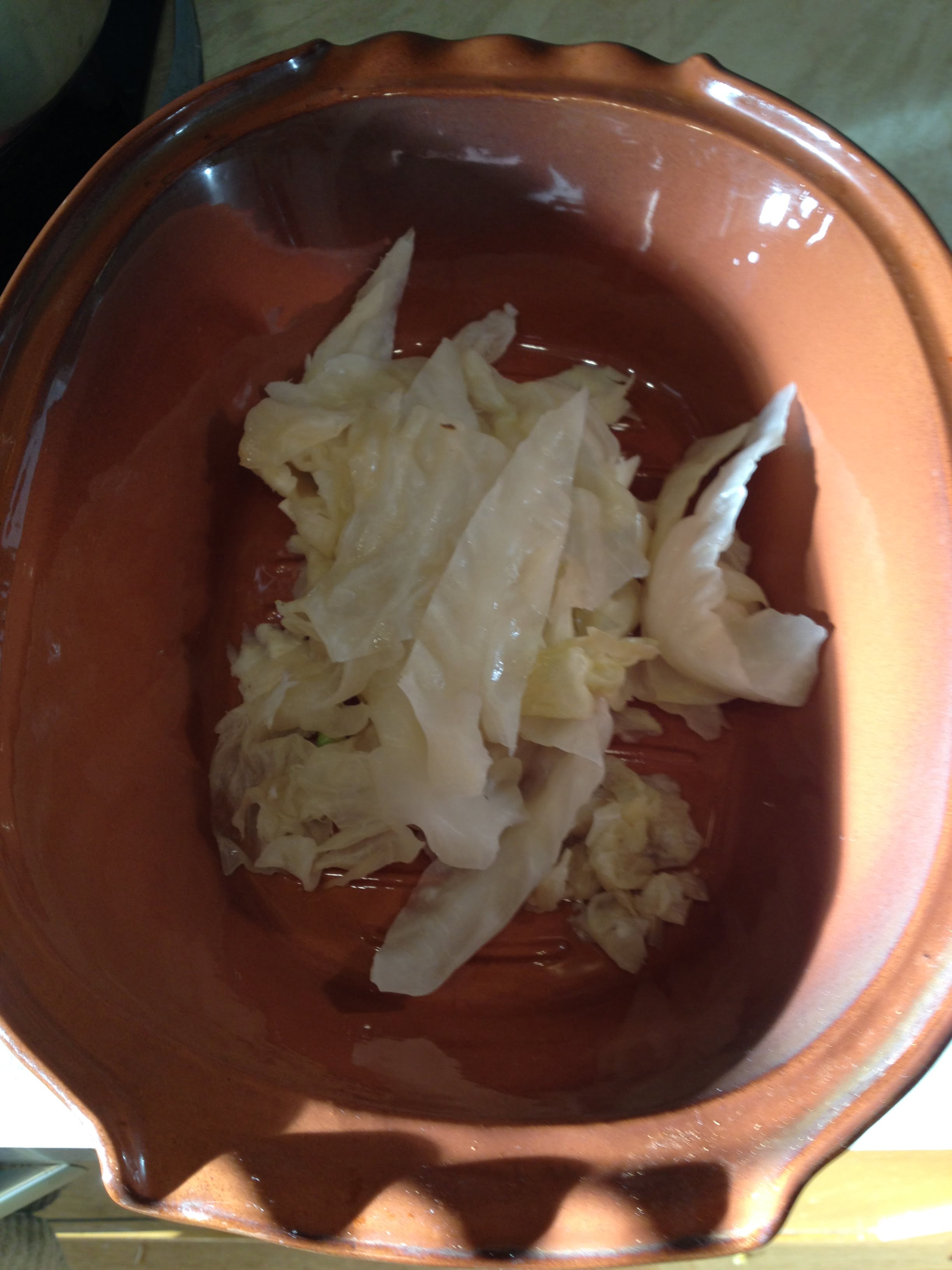
- Place the lid on the Dutch oven or dish, and cook in the oven at around 180-200ºC (360-400ºF, Fahrenheit users, please switch to SI/metric) for 2+ hours. Traditionally it’s cooked in a fireplace. Check when it’s around time for burning of those extra leaves you put on top earlier - once those start to burn, check the sarmale below, which should be well-cooked and tender.
Bon apétit!
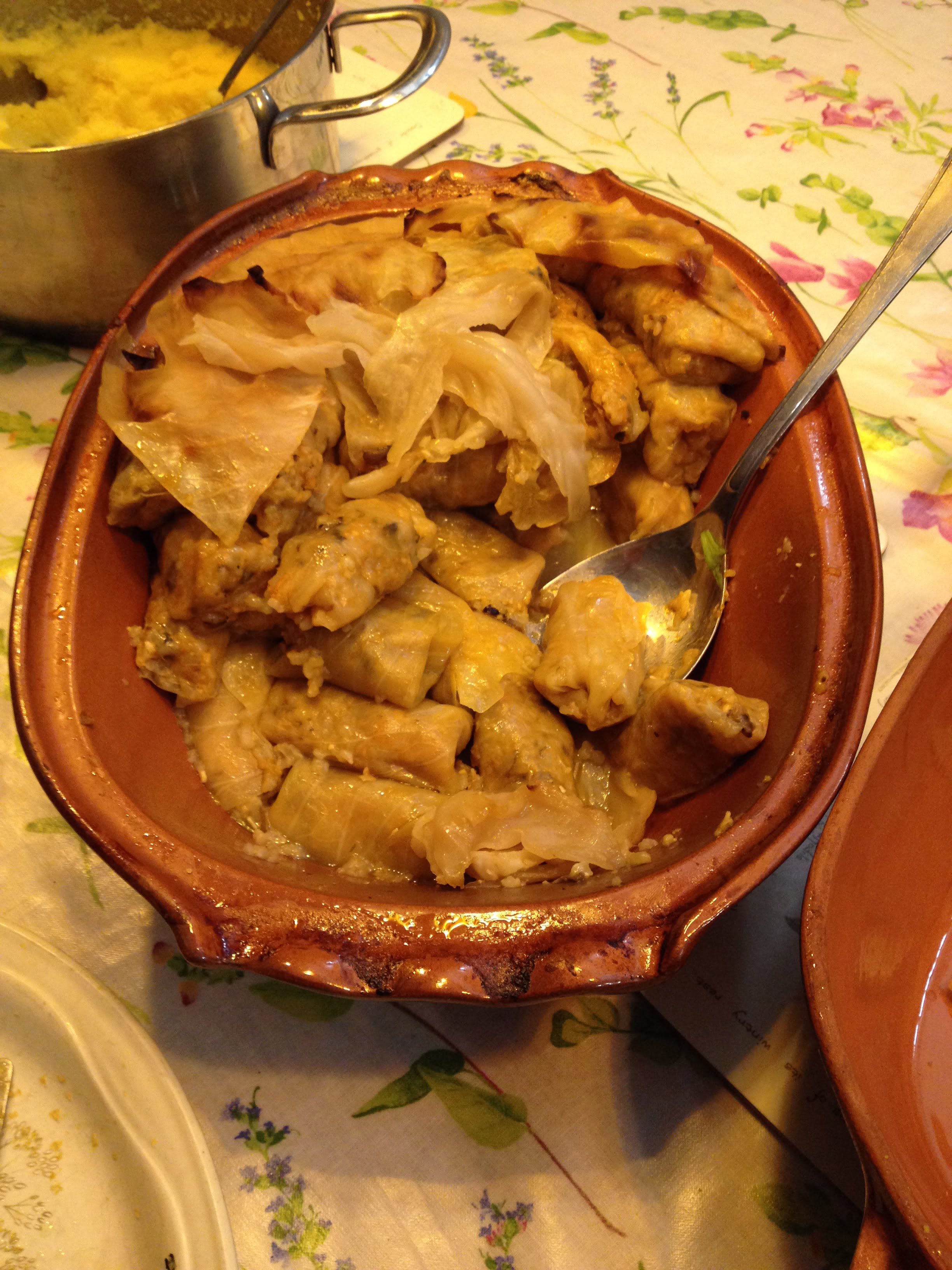
Give thanks to God for the good food, to your assistants who helped roll the leaves, and to your host for taking the trouble, and enjoy the sarmale fresh, reheated or even cold as a snack over the next week, if they don’t disappear before then! (You can discard the extra leaves, chunks and liquid). It’s very delicious, though I only recommend making for special occasions, due to the high fat content and hard, fiddly work involved.
Credits
- Original recipe: Ioana, Jan. 2021
- Write up: Darren de Lima, started 11/29/2022 10:27:56 PM (I had wanted to finish this in time to send to my cousin Camden for his birthday)
- See also this recipe for Romanian Stuffed Cabbage on TheSpruceEats



